Last Updated on June 4, 2024 by teamobn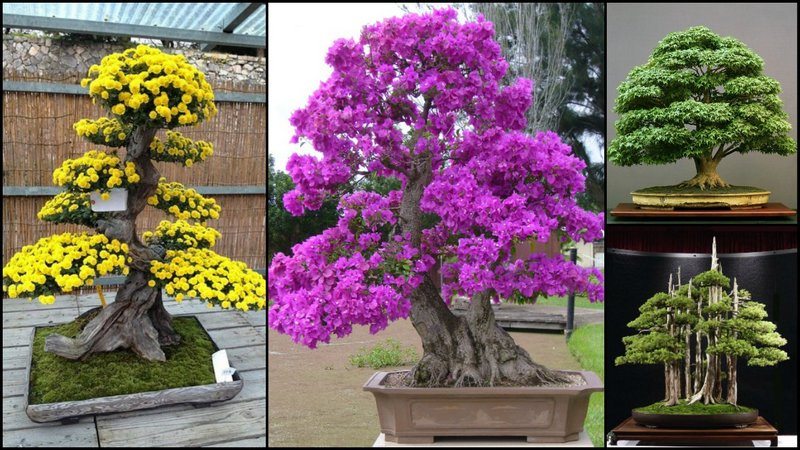
Bonsai is a centuries-old art form that originated in Japan. It involves the growing of various trees in small pots or trays, and the careful pruning and shaping of these trees to create living sculptures.
These trees are often quite small, and they are highly prized for their beauty and the amount of time and effort that goes into their creation. It can be created from almost any tree or shrub species, and the creation and care of creating one is an absorbing hobby.
The word bonsai is often used in English as an umbrella term for all miniature trees in containers or pots. However, the term does not refer to a particular plant or tree, but rather to the art of growing these plants.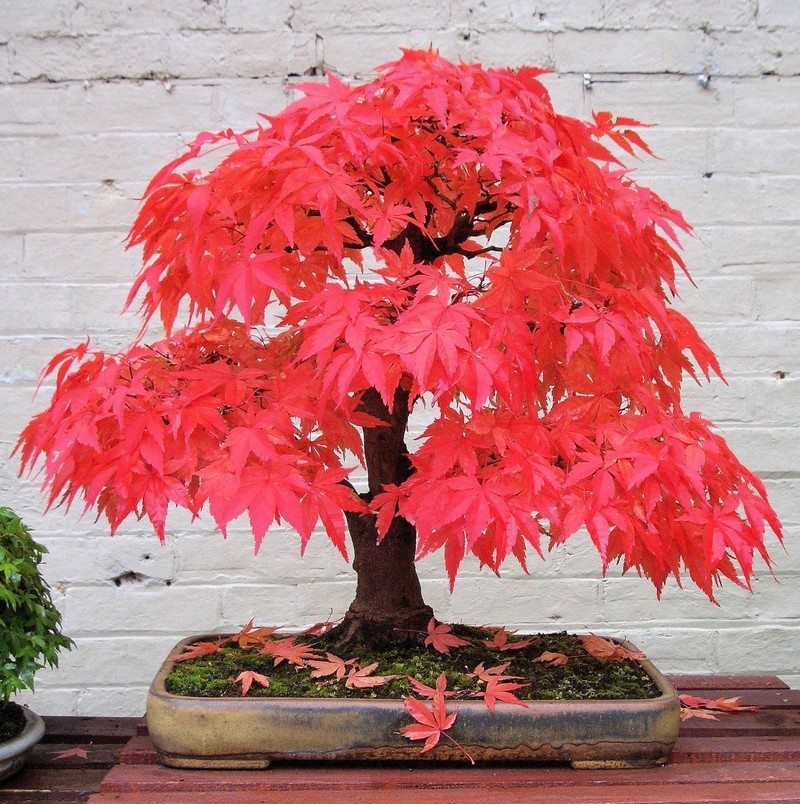
In fact, all tree varieties can be specimens – as nature herself will sometimes show us, but those who practice the art prefer to work with just a few varieties.
This is because certain tree species are more amenable to the treatment than others. The most popular trees for bonsai are maples, junipers, and pines. The art itself is often seen as mysterious and elusive, something that only experts can do.
However, the truth is that anyone can create one – all you need is a bit of patience, the right tree, and some basic knowledge.
How to Grow Bonsai Trees
First, you must choose the tree you want to turn into a bonsai.
When choosing a tree, the most important thing to consider is the tree’s species. Some species of trees are better suited for bonsai than others. For example, the Japanese maple is a popular choice because of its small leaves and delicate branches. Other popular choices include the juniper and the elm.
Once you have chosen a species of tree, you will need to consider the tree’s age. Younger trees are often easier to train and shape than older trees. You will also need to consider the tree’s size.
Bonsai are typically small trees, so you will need to choose a tree that is not too large.
Then, you must prune the roots and branches.
Make sure that you create a symmetrical shape when you are pruning your tree. It is important to avoid damaging the roots or branches, so you need to take extra care when handling them. The use of wire can help train the roots and branches into the desired shape. It can also be used to support the plant as it grows and to keep it from toppling over.
Finally, you must care for the bonsai tree carefully.
The most important thing to do in taking good care of your bonsai is to make sure that you water it regularly. It requires very little water, so don’t let the soil dry out completely. It also requires very little fertilizer, so never over-fertilize it.
It will require a lot of sunlight, so never keep it in a dark room. And It requires a lot of airflow, so don’t keep your bonsai in a sealed container, otherwise, it will die.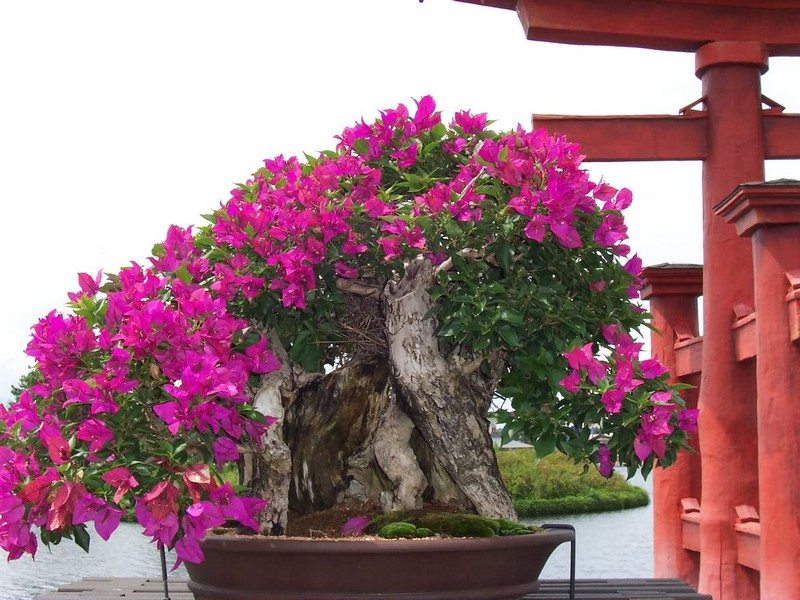
Below are some of the most amazing trees you can find. Given that these trees usually grow really tall and wide, we think these bonsai versions are incredibly impressive!
Rich Varieties of Bonsai
Click on any image to start the lightbox display. Use your Esc key to close the lightbox. You can also view the images as a slideshow if you prefer ![]()
Japanese Red Maple
Specially in the fall, the Japanese Red Maple bonsai is prized for its exquisite leaves and brilliant color. Usually featuring finely textured, deeply lobed leaves that change through an amazing spectrum of hues throughout the seasons, this bonsai. The leaves appear in the spring in a brilliant crimson or pinkish tint, then progressively turn into a rich green in the summer and, in the fall, a blazing show of reds, oranges and yellows.
Its graceful, frequently twisted limbs and smooth, gray bark make it a highly sought-after example in bonsai art. Often used to produce a variety of forms, including upright, slanting, and cascading, which highlight the tree’s brilliant hues and elegant growth patterns, the Japanese Red Maple bonsai is a symbol of peace and tranquilly.

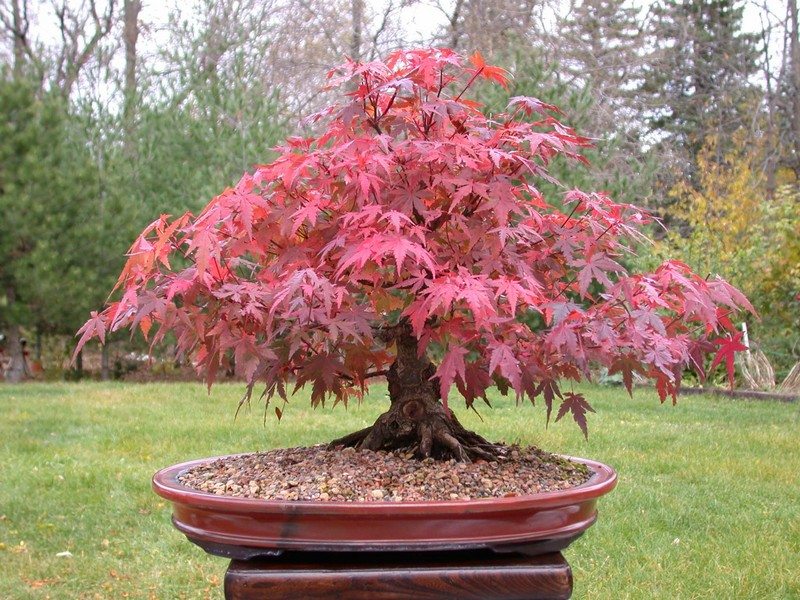
Silver Birch
Because of its characteristic white bark, which flake and peel off as it ages, giving a rustic charm, the Silver Birch bonsai is well-known for its striking appearance. Little and delicate, the triangular, serrated leaves of this bonsai are usually bright green and turn yellow in the fall. Playful light and shadow interaction made possible by the light, airy canopy adds to its visual appeal.
Frequently cultivated in clumps in bonsai form, the Silver Birch displays its graceful and thin trunks by resembling a little grove of trees. A fascinating addition to any collection, the Silver Birch bonsai evokes a feeling of a little woodland scene with its contrast between the green foliage and the white bark, particularly in summer.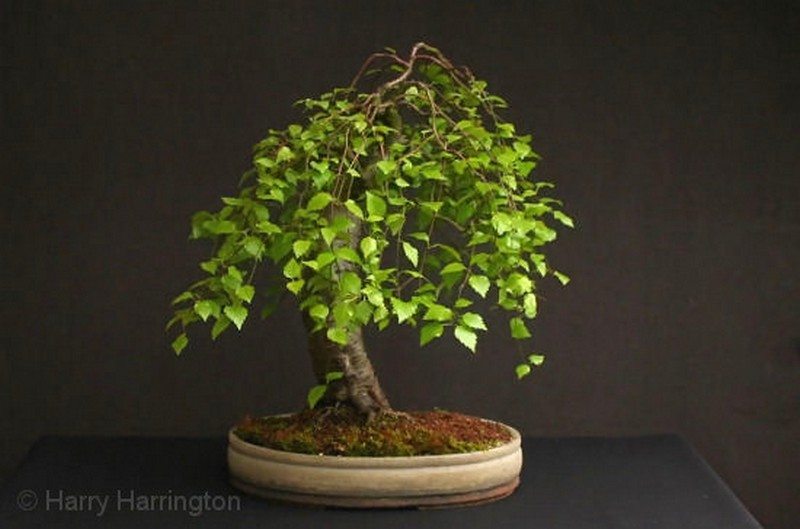
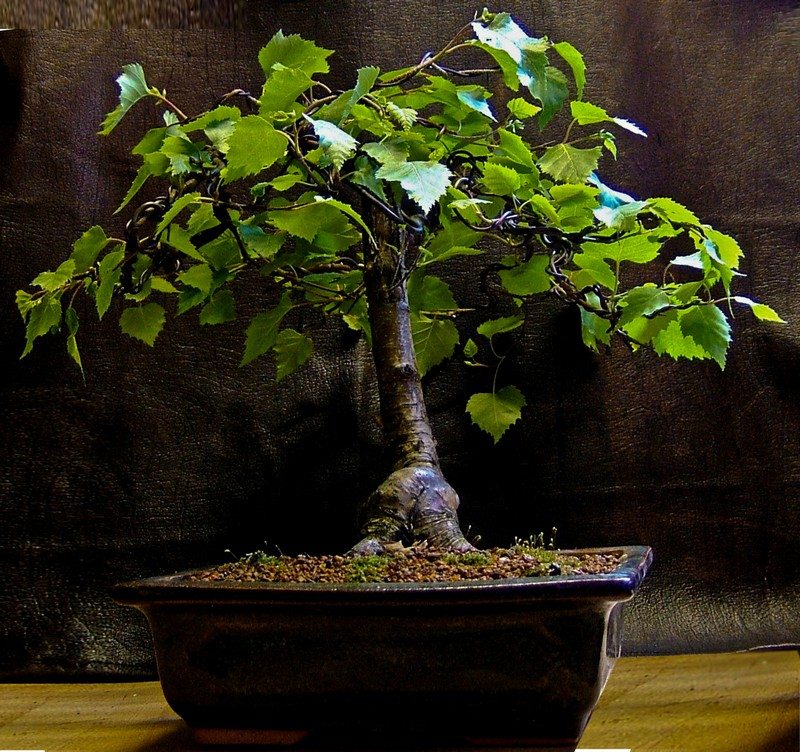
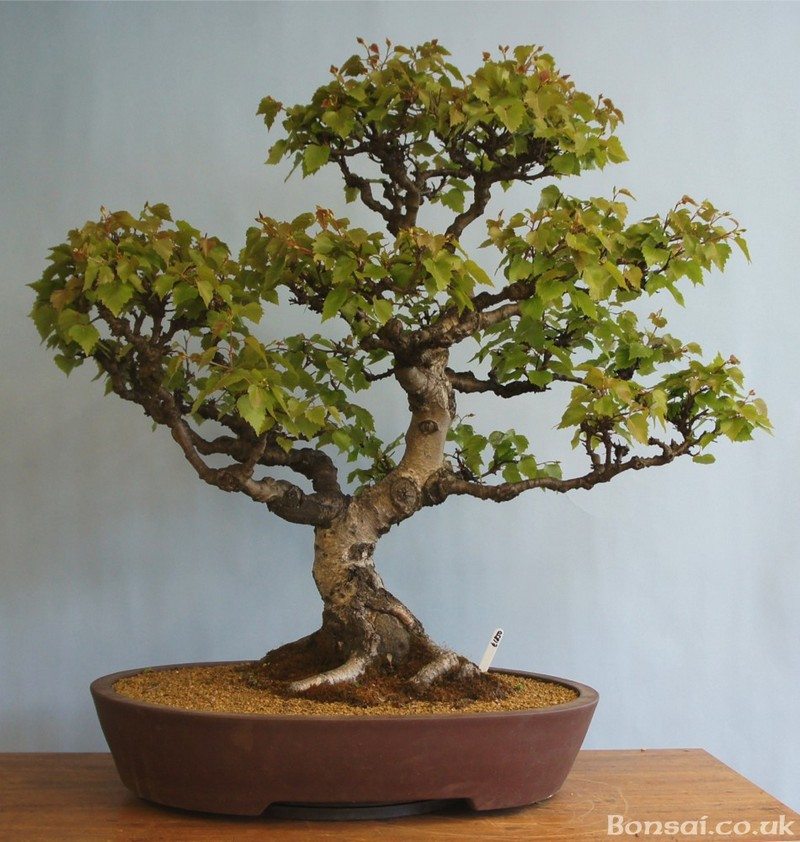
Bougainvillea
Reputable for its brilliant display of colorful bracts encircling tiny, white blooms is the Bougainvillea bonsai. Pink, magenta, purple, crimson, orange, white, or yellow bracts can all occur together to produce an amazing display of hues. Bonsai aficionados love the plant because of its innate propensity to bloom lots. Usually dark green, heart-shaped, and somewhat leathery, the leaves offer a rich background for the vivid flowers.
Because the Bougainvillea commonly has cascading blooms in bonsai form, forms like the cascade or semi-cascade are very well-liked. Smooth and mild gray in hue, the bark looks great against the vivid flowers and dark foliage. It is perfect for bonsai growth because of its pot-growing qualities and trimming tolerance, which let artists create magnificent tiny versions of nature’s beauty.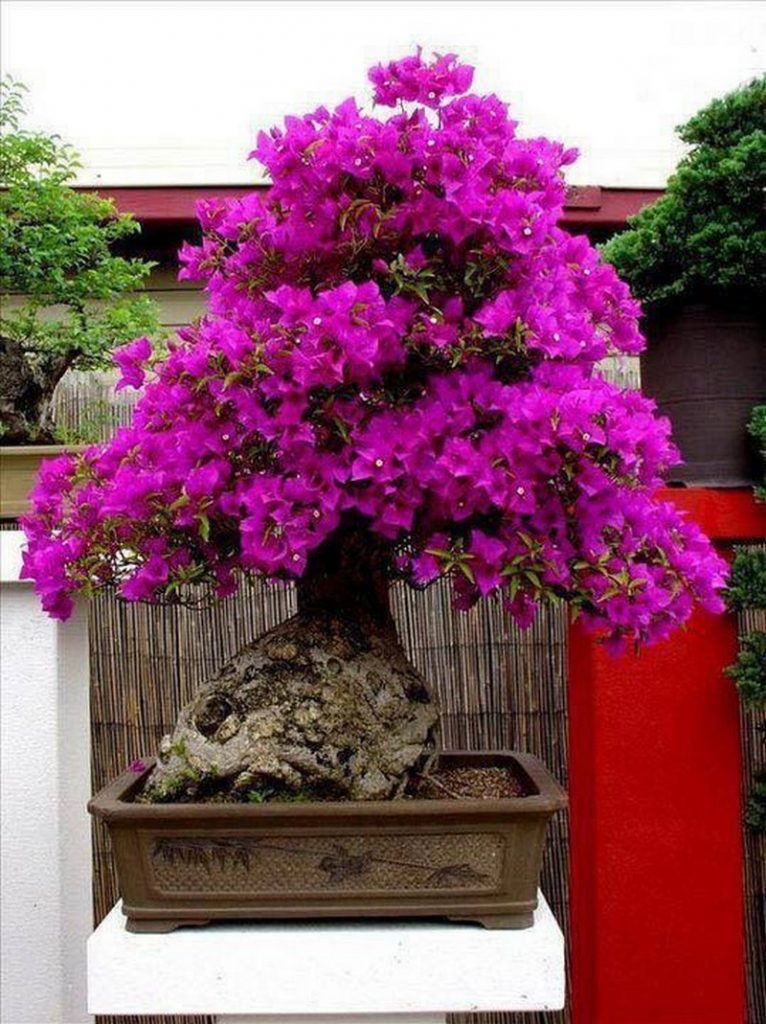

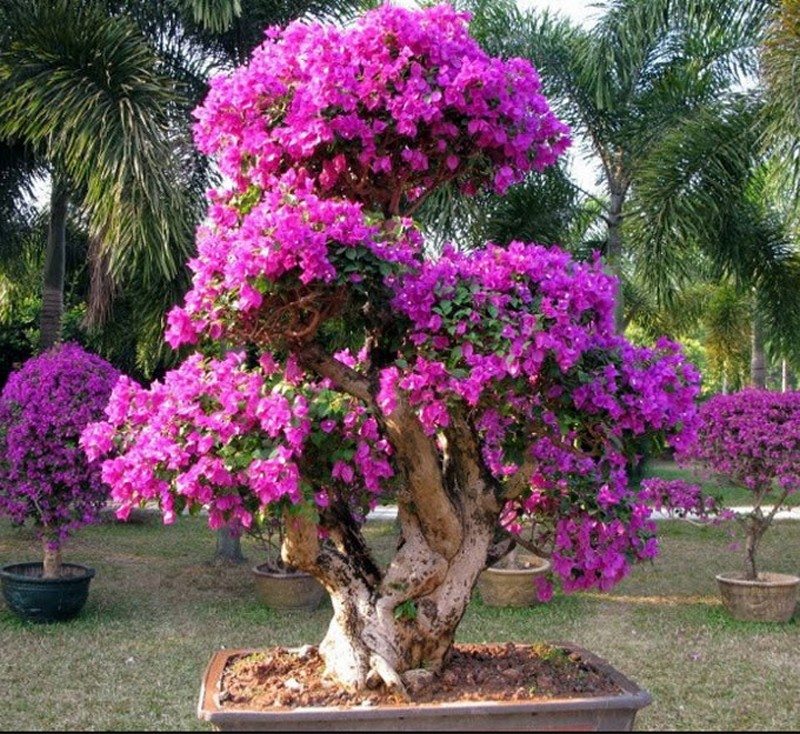
Pomegranate
Pomegranate bonsai are prized for their decorative value as well as its symbolic meaning in many cultures, which includes fertility and prosperity. This variation yields little copies of the fruit-bearing pomegranate tree, complete with tiny fruits after flowering. Bright orange-red blossoms stand out sharply against the glossy, dark green leaves. The tiny, lance-shaped leaves themselves give the tree an even more delicate look.
Prudent shaping is necessary to keep a pomegranate bonsai compact and promote fruit and bloom production. As the tree ages to a characteristic grey-brown, its bark gets rough and textured, giving the tree depth and personality. The capacity of this species to adjust to the limitations of its culture—rigorous shape and pruning, which emphasizes the inherent beauty of its fruits and blooms in a small-scale environment—is what makes it especially prized.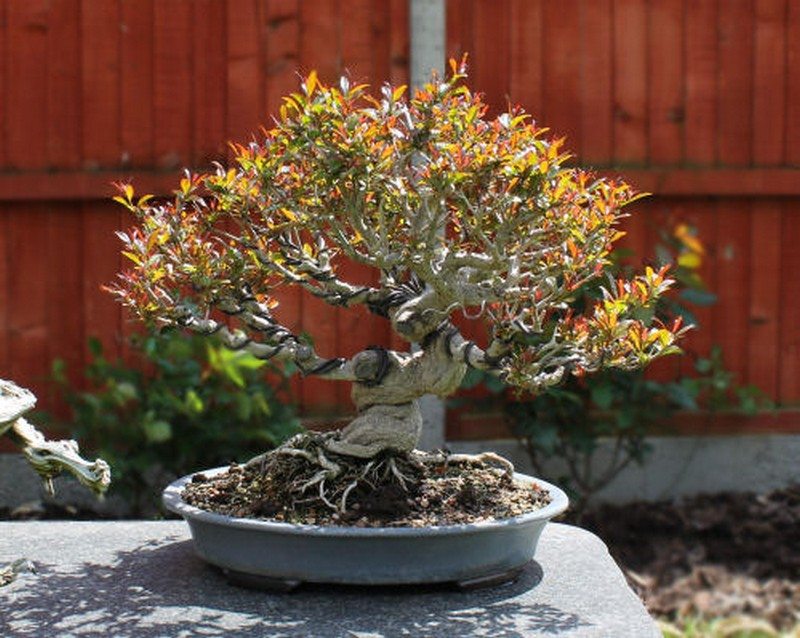
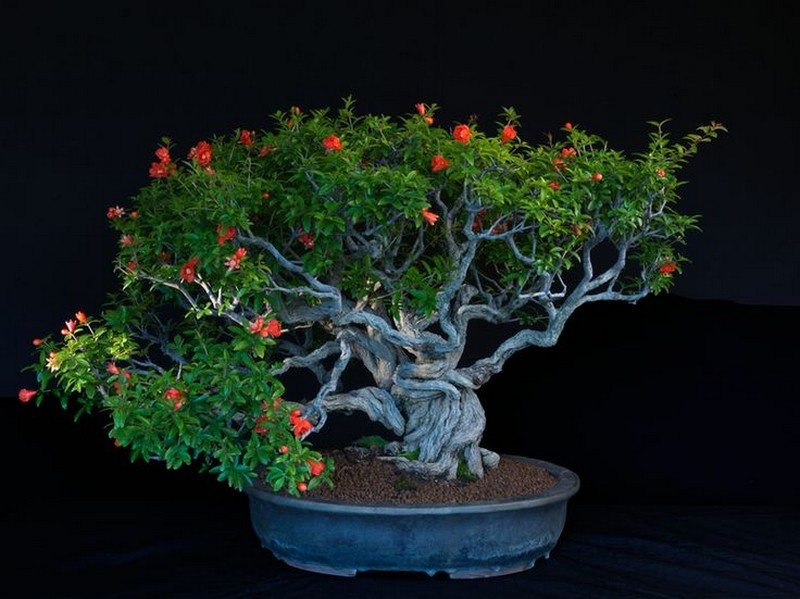
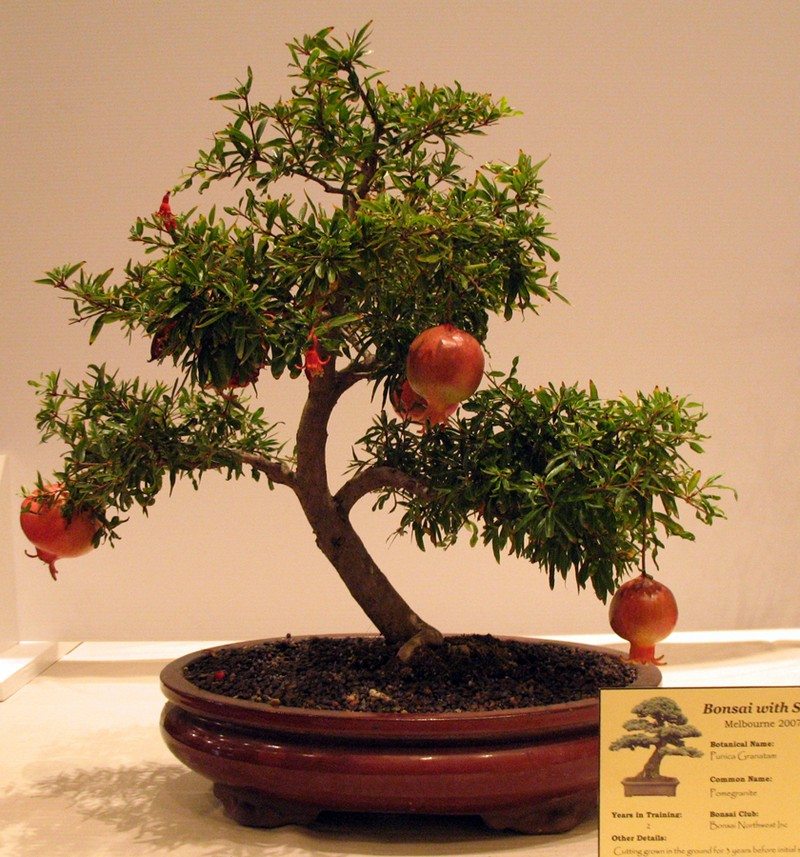
Cherry Blossom
Sakura, another name for Cherry Blossom bonsai, miniatures the transient beauty of its famous blooms. The amazing show of pink to white blooms that signal the approach of spring makes this bonsai much admired. Clustering around the branches before the leaves emerge, the delicate, almost ethereal blossoms make a striking contrast to the dark, complex limbs of the tree. The tiny, oval, somewhat serrated leaves that follow are green in the summer and become golden or crimson in the fall.
In practice, the cherry blossom is frequently styled to emphasize its innate tendency for elegant, spreading canopies, which qualifies it for styles like as the weeping or informal upright. The horizontally lenticeled bark of the tree adds still another level of visual intrigue. For aficionados, this is a satisfying challenge because it needs precise timing and trimming to maximize blossom output. Because it represents rebirth and the beauty of life, it is a popular subject in traditional Japanese painting as well as bonsai growing.
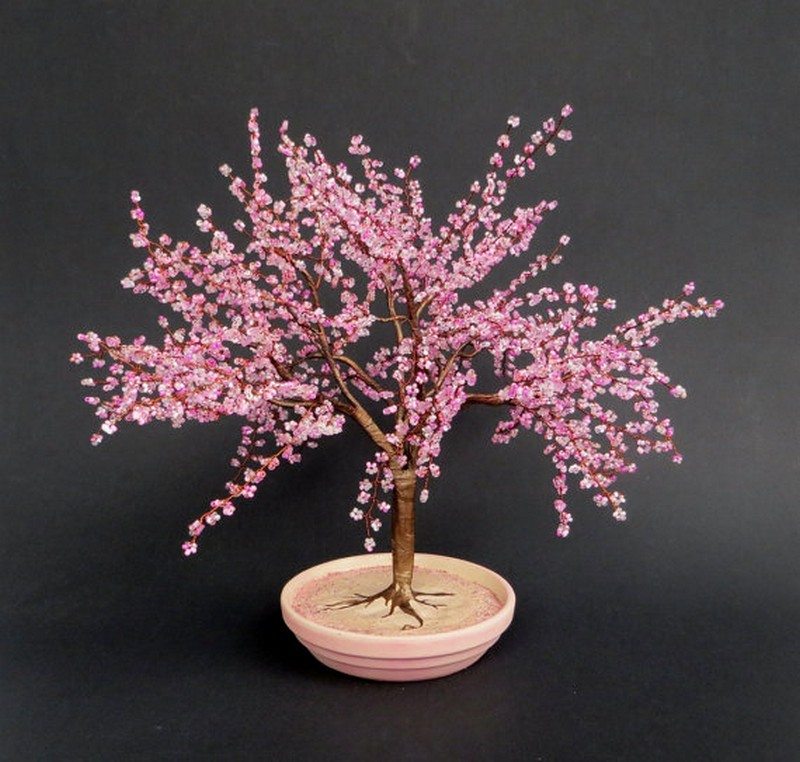
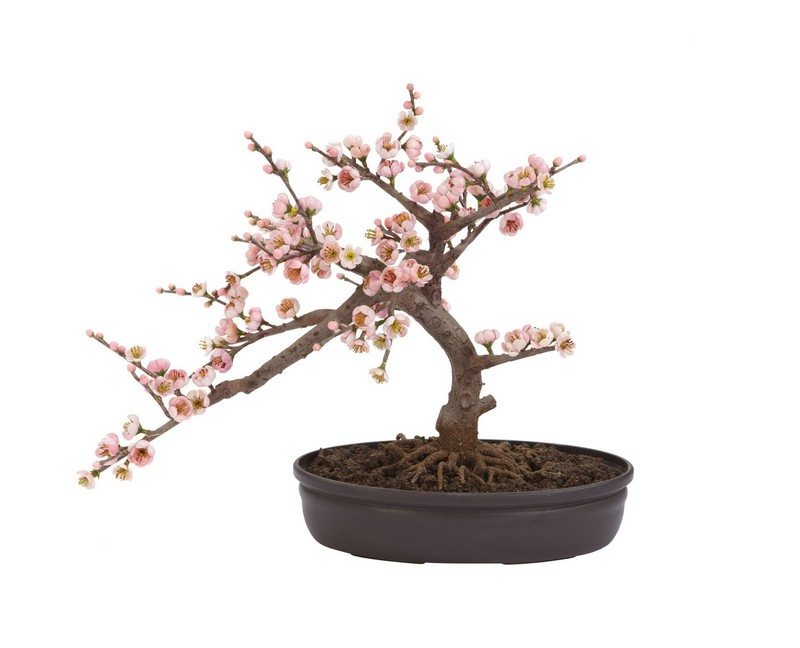
Ezo Spruce
Originating in the coldest parts of Japan, the Ezo Spruce bonsai is a representation of tenacity and fortitude because of its tough, resilient character. This bonsai has thick, full-looking, sharp-to-the-touch dark green needles that cluster tightly along the branches. Rough and flaky, the bark of the ezo spruce usually has a rich brown hue that gets darker with age, making a dramatic contrast to the vivid green of its foliage.
Using its inherent conical growth pattern, the Ezo Spruce is frequently sculpted as a bonsai into formal upright, informal upright, or slanting styles. Because it can tolerate severe weather and grows slowly, the tree is especially well-known for bonsai culture, where it enables careful shape and training over many years. Fans prize this species for its year-round color and the tactile contrast its needles offer against bonsai with smoother leaves.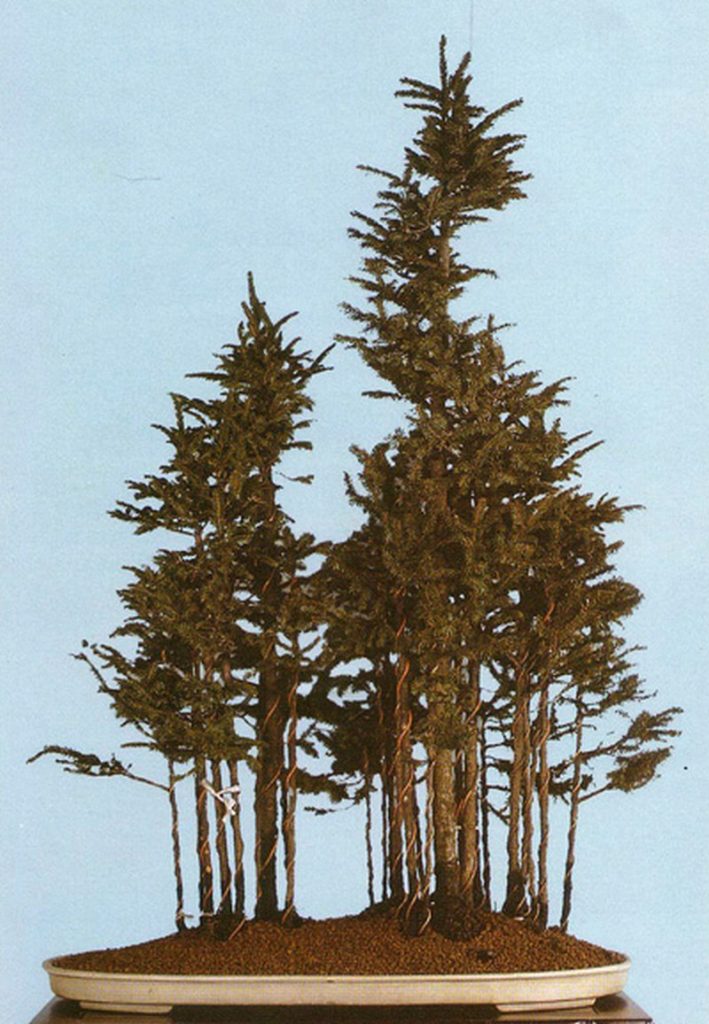
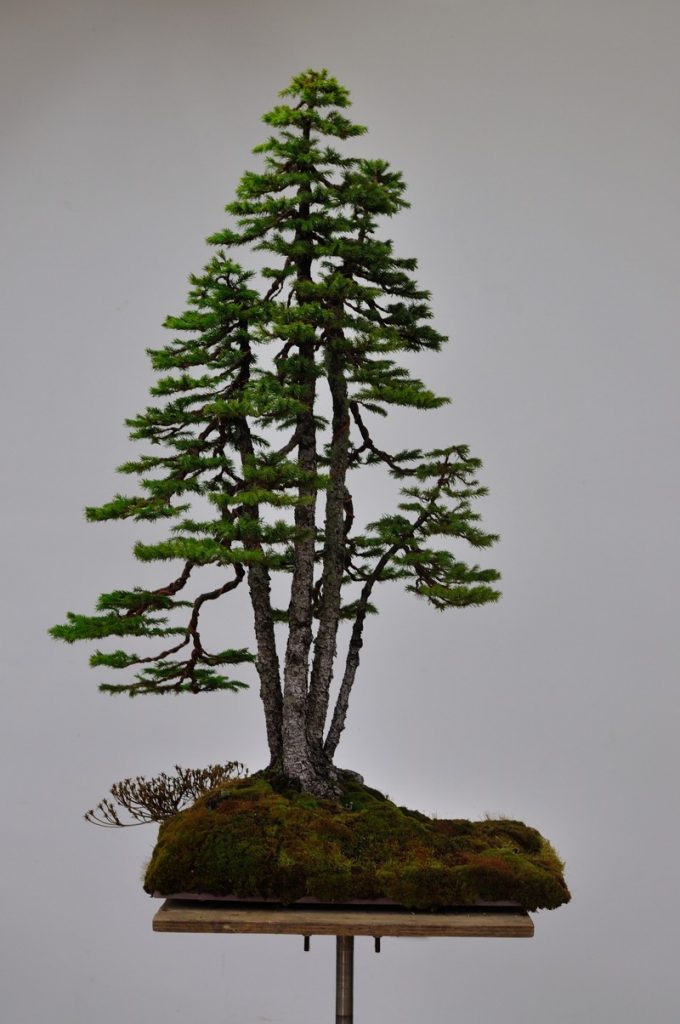
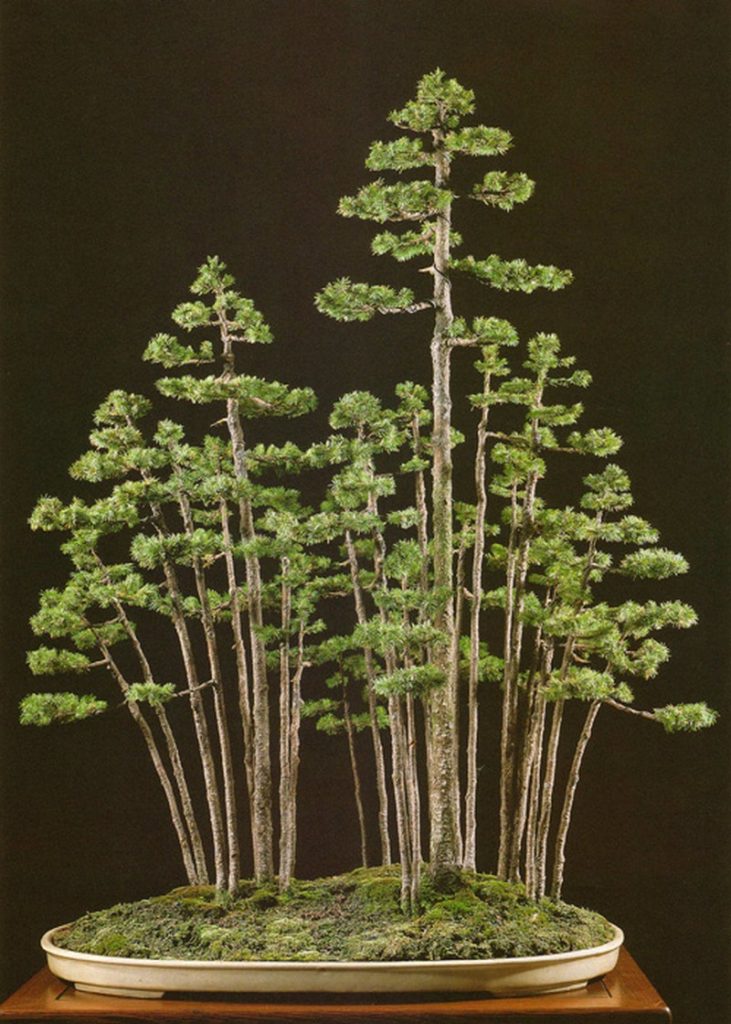
Wisteria
Wisteria is renowned for its stunning cascades of fragrant flowers, typically appearing in hues of purple, pink, or white. These long, pendulous racemes can grow to impressive lengths, creating a breathtaking display of color and scent in the spring. The plant’s foliage consists of large, green, pinnate leaves that provide a lush backdrop to its dramatic floral exhibitions. Wisteria’s growth habit is vigorous and sprawling, making it a popular choice for covering arbors, pergolas, and trellises.
The bark of the Wisteria vine is smooth and gray, becoming more gnarled and twisted as it ages, adding character to its appearance. Its ability to climb and adapt to various forms of support allows for creative landscaping designs. Gardeners often train Wisteria to grow on sturdy structures, but it can also be maintained as a freestanding tree with careful pruning and shaping. The plant symbolizes romance and longevity, often celebrated in festivals and garden shows for its spectacular growth and enchanting beauty.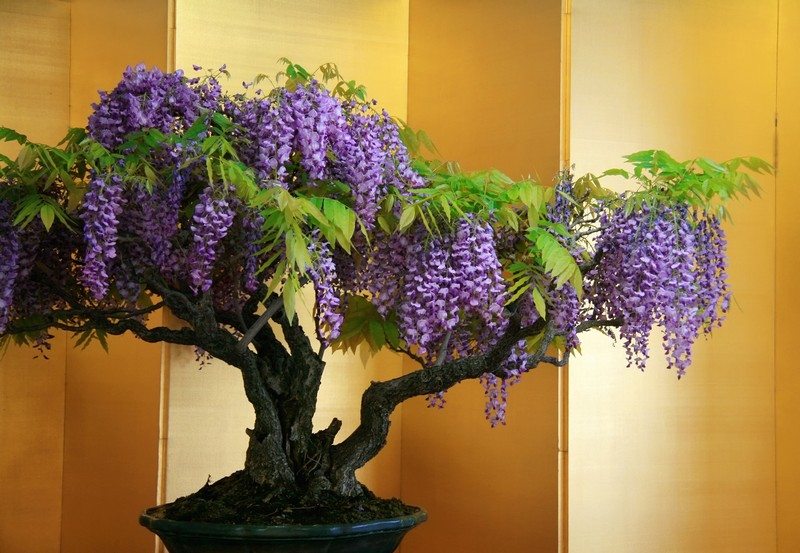
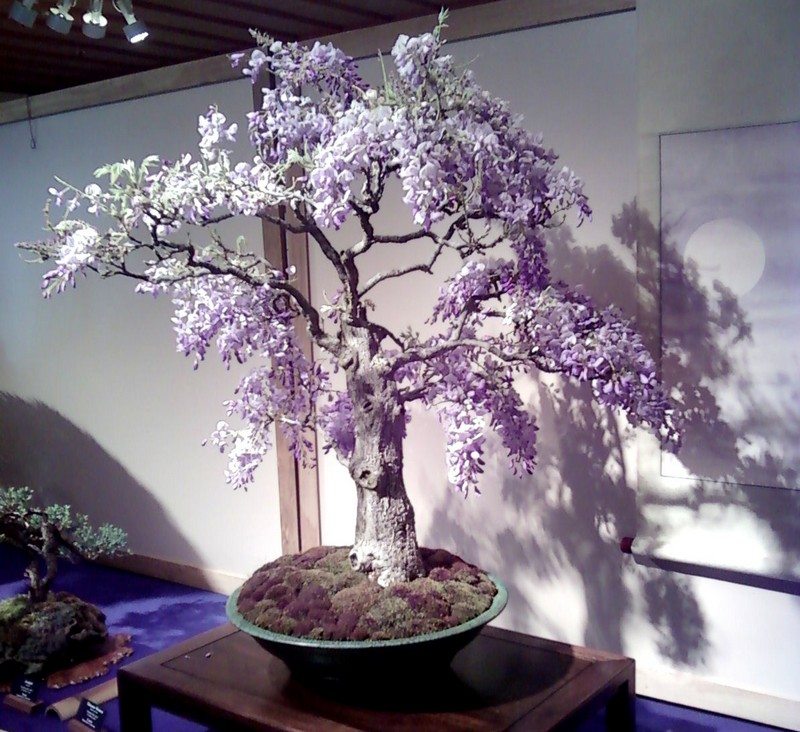
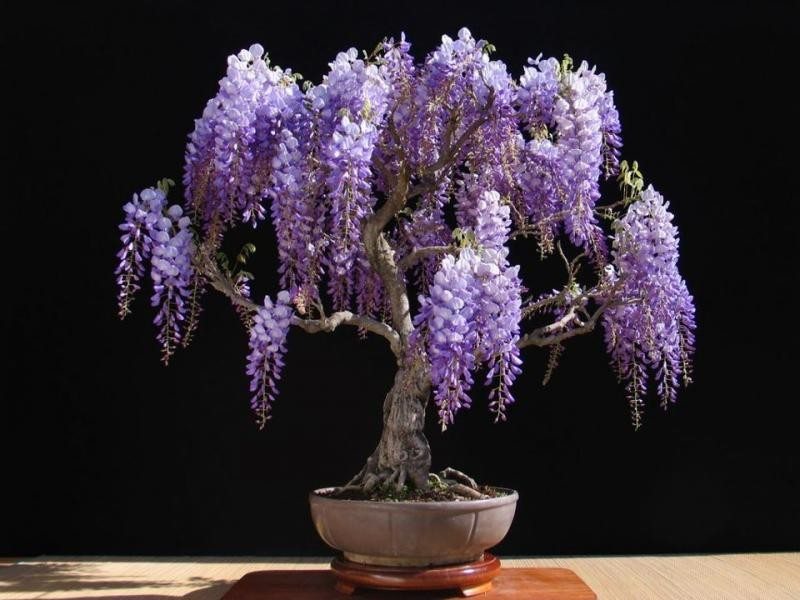
Japanese White Pine
The Japanese White Pine features a delicate, fine-needled foliage with a soft, bluish-green color that remains vibrant throughout the year. This pine variety is particularly admired for its irregular, often asymmetrical shape and the wide, open spaces between its branches, which give it a serene, windswept appearance. The tree’s bark is a rugged gray that flakes off in small plates, adding texture and visual interest.
Japanese White Pine is a slow-growing tree that lends itself well to meticulous shaping and cultivation, making it a favorite in traditional Japanese garden designs. It thrives in well-drained, sandy soils and requires full sun to partial shade to develop its best color and form. This pine is often used as a specimen tree in landscapes due to its distinctive silhouette and the tranquil aesthetic it brings to garden settings. The tree is also resistant to many pests and diseases, making it a durable and low-maintenance choice for long-term planting.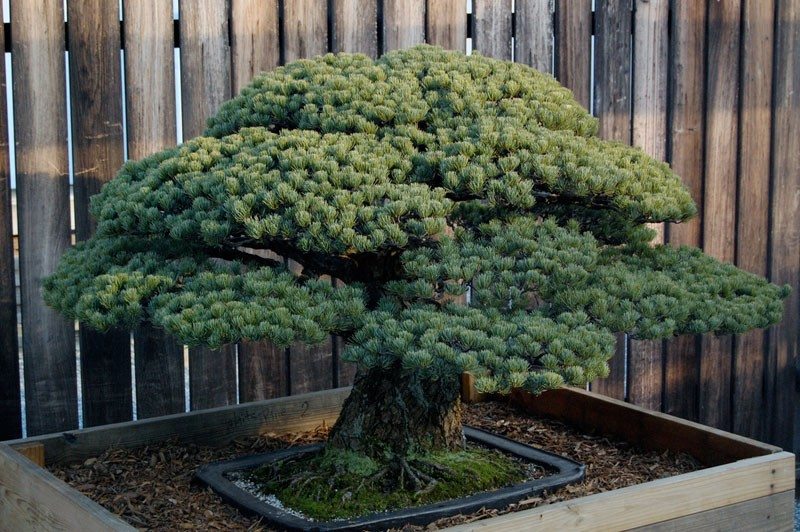
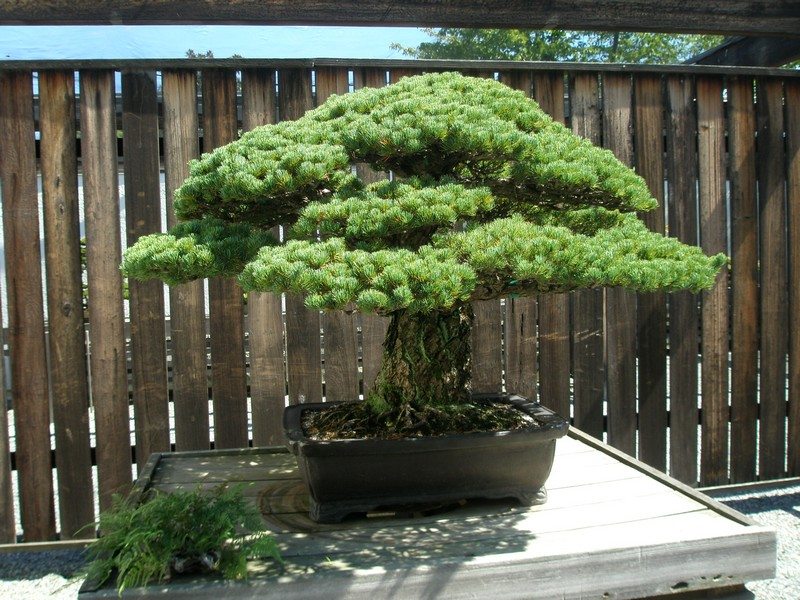
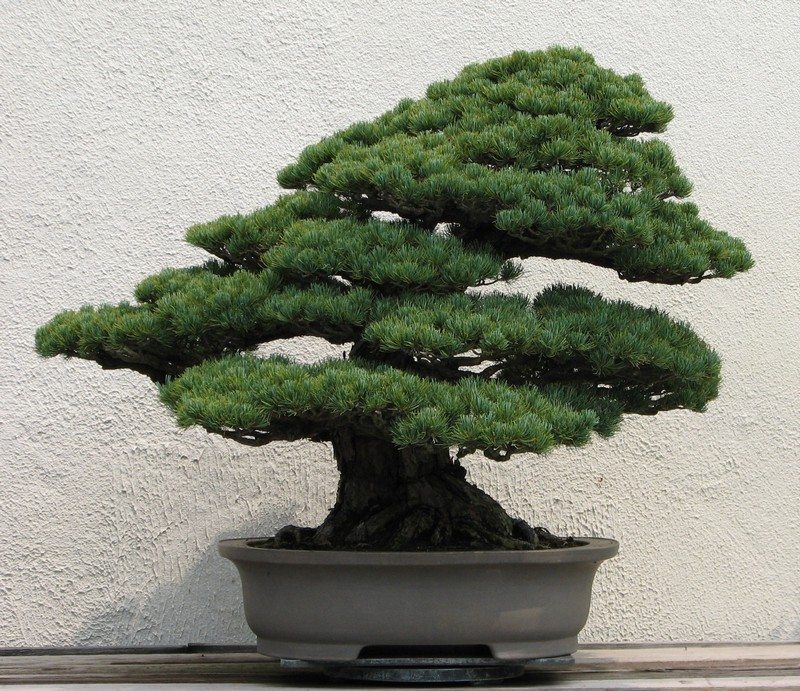
Conclusion
A fulfilling hobby that blends horticulture and art, bonsai tree growing enables aficionados to produce breathtaking little landscapes. The health and beauty of the trees need time, meticulous attention to detail, and routine care. Growing bonsai provides a special chance to exhibit creativity via living sculptures and to interact with nature.
If you liked this, you might also like these gardening ideas…








